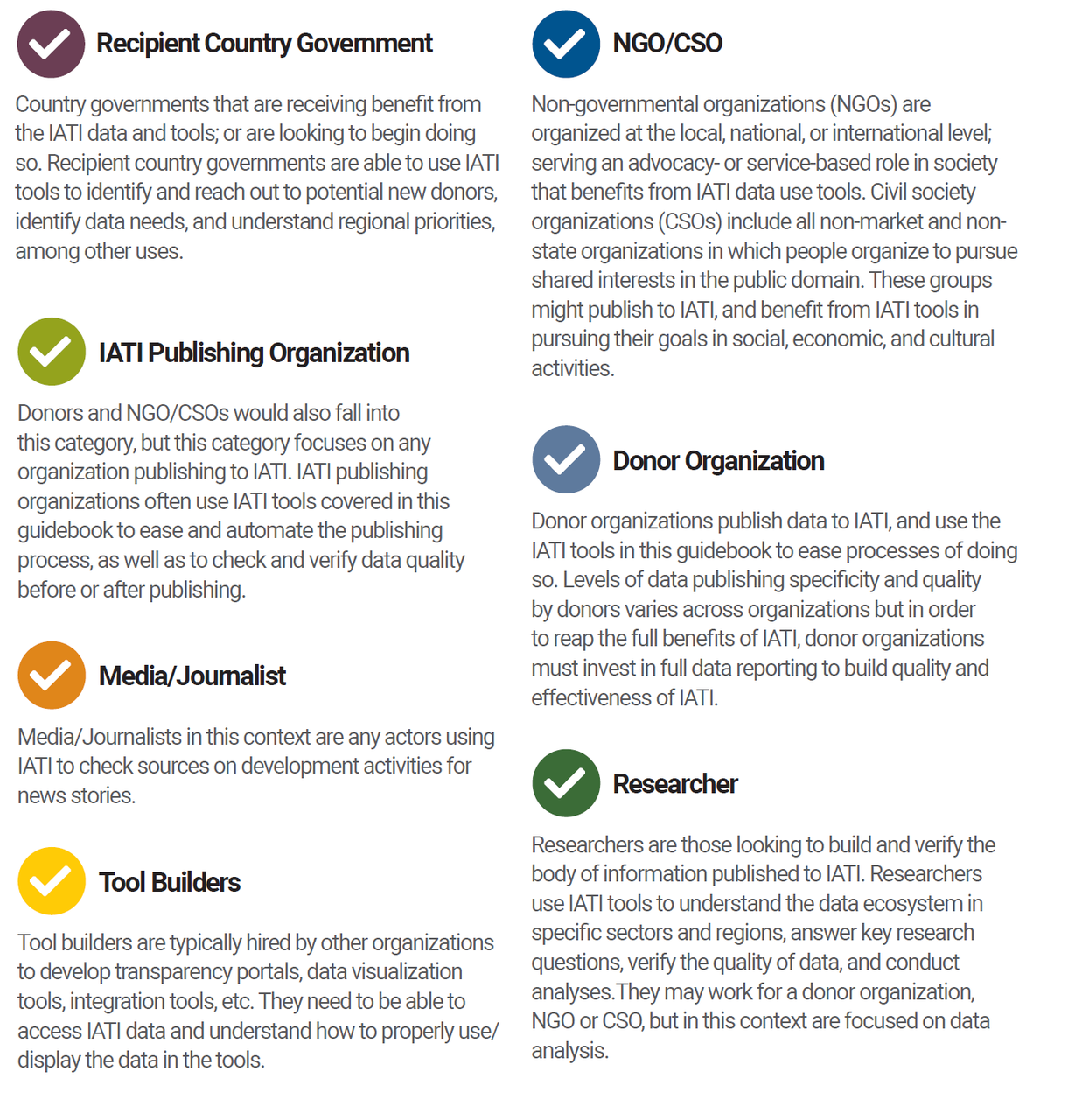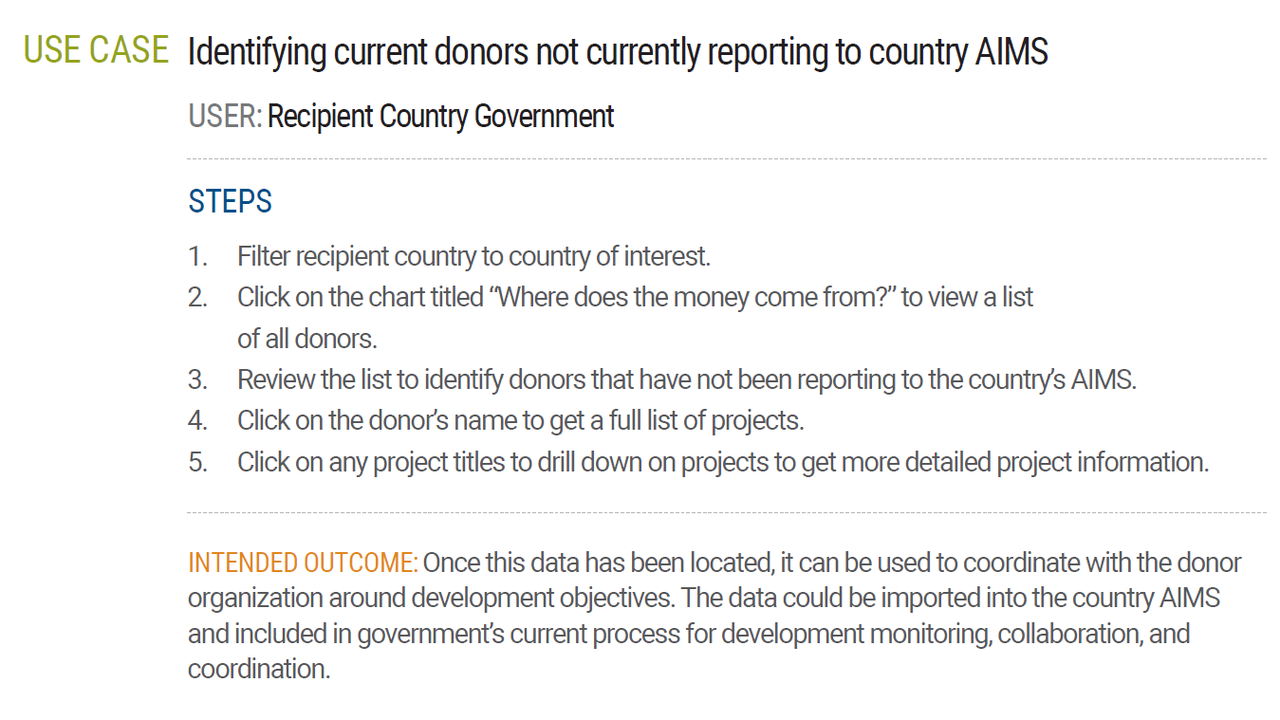Cracking Open the IATI Tool Guide
This post is written by Taryn Davis, Senior Associate at Development Gateway on the launch of new guidance on using IATI data through a range of available tools. The original version of this post can be found on the IATI website here, and you can download and explore the Tool Guide here!
As the number of tools and resources for using and publishing data to the International Aid Transparency Initiative (IATI) continues to increase, it gets harder to keep track of what is available, and how maximize each tool’s benefits. To address this, we at Development Gateway put together the IATI Tool Guide, a one-stop guide to IATI tools and resources.
The IATI Tool Guide is built around key user groups. Simple icons indicate which tools and resources each user group are most likely to benefit from. Use cases give examples and steps on how specific user groups could use the tools to meet their own needs. To use the guide follow these three simple steps:
Step 1
Start by identifying your user group (you may fit into more than one group).

Step 2
Identify what tools are applicable to your user group by reviewing the table of contents and identifying which ones are marked with your user group’s icon color.
Step 3
Once you’ve identified a relevant tool, go to the tool’s section and check out the example use cases applicable to your user group such as the one below for Recipient Countries using d-portal.

In addition to the guidance and tips available, organizations that provide IATI services are listed in the Tool Guide. Icons denote if the organizations provide technical services, or other means of support (or both), to those aiming to use and publish to IATI. We hope that if you’re not able to find a tool or resource here that matches your needs, you’ll be able to identify the organization that can help make that happen.
To create the IATI Tool Guide, we interviewed IATI data publishers, researchers, NGOs, development partners, journalists, and tool builders to create a comprehensive resource, full of applicable use cases.
The creation of the guide was supported by the IATI Data Use Fund, and was launched at the 2018 IATI Technical Advisory Group (TAG) meeting in Kathmandu, Nepal. Please contact support@iatistandard.org with any new tools that you would like to see included in future updates.
Share This Post
Related from our library

Diving into the DaYTA Program’s Data Collection Process
This blog explores key insights from the DaYTA program, offering practical guidance for researchers on effective data collection, overcoming field challenges, and leveraging local partnerships to enhance tobacco control efforts. This piece is especially timely following DaYTA’s workshop convening all 3 study country stakeholders to review the survey results and strategize on how best to disseminate this data to target audiences. This workshop took place from in Lagos, Nigeria, from November 18-20th.

New Research Manuscript on Mortality from Tobacco Use in Kenya
DG is excited to announce the publication of a research manuscript on Mortality from Tobacco Use in Kenya in Tobacco-Induced Diseases. This research was carried out as part of the Tobacco Control Data Initiative (TCDI).

How useful is AI for development? Three things we learned from conversations with development experts
The development world is buzzing with excitement over the idea that new and emerging applications of artificial intelligence (AI) can supercharge economic growth, accelerate climate change mitigation, improve healthcare in rural areas, reduce inequalities, and more. But what does this look like in real life?